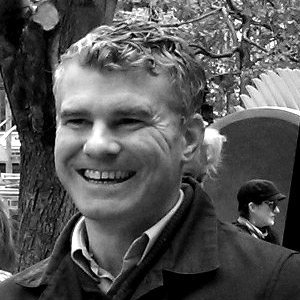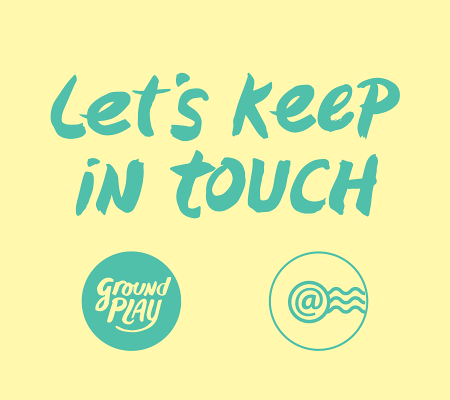
Andrew Robinson
Interview with Andrew Robinson, YBCBD
Published: March 2015
by SF Planning
How did you get involved with the Pause on Market Street LIZ*?
Pause is the outgrowth of the Yerba Buena Community Benefit District’s (YBCBD) Yerba Buena Street Life Plan, a 10-year road map of possible public realm improvements in the neighborhood. That plan signaled our intentions to create a more livable neighborhood that reflects the growing population and offers amenities that makes a neighborhood great. SF Planning’s Neil Hrushowy participated in the development of the Street Life Plan, and understands what the YBCBD aims to achieve in the public realm. He brought us together with the Exploratorium and the City to bring this idea to life. There are 36 projects in the Street The Street Life Plan, and its 36 Projects, provided leverage and credibility with stakeholders that the YBCBD is seriously committed to cultivating positive public realm activations. The LIZ project, specifically, is outside of the Street Life Plan, but 100% within the goals of the YBCBD.
How has this LIZ added value to the Yerba Buena community?
It’s exceeded expectations. It is a welcome mat to the neighbor¬hood. People may not realize what a vibrant neighborhood Yerba Buena is. There are approximately 10,000 people that live here in the neighborhood and countless people visit our cultural institutions and Moscone Convention Center. Historically, the neighborhood may have been overlooked in the development of its public realm, but its moment is now. The top of Yerba Buena Lane is really a nice entry point into the neighborhood. It offers ample space for people to gather and linger at the LIZ.
“Pause” generates smiles. There are very few things that I can point to where that’s the outcome. It makes people curious, and it has become a destination spot. We hosted a holiday digital projection project, where the greetings and holiday wishes were projected on wall adjacent to the LIZ because we knew it was an attraction. On Market Street, there is nothing like it.
Overall, we’ve seen this great steward¬ship from the people who use the LIZ. There are people every day discovering how the dishes or the bench work and share that knowledge with others. It’s been a really wonderful invitation to the neighborhood.
What challenges have come up with the LIZ installation?
Most of the challenges were in the design phase. How do you design something for a two-year lifespan? Unlike a permanent structure which is bolted down, the LIZ had to be durable enough to withstand being on Market Street for a two-year period while ephemeral enough to be easily removed. How do you get buy-in from neighborhood stakeholders when no one can quite say what the first LIZ will be? These were some of the challenges. We were lucky to be brought together with the Exploratorium and the Planning Department staff on this project. Their thoughtfulness and solution-oriented approach helped us in engaging the neighborhood.
Post-installation there have been a few challenges, and a ton of learnings. We have learned a lot about ideas our Street Life Plan promotes. The LIZ is a great example of how public seating can work in San Francisco. The City needs more of it located in the right places. The YBCBD also wanted to test out ideas related to green technology in the project. We advocated for a charging station to be included in the design. The pedal- powered station that was part of the installation at its unveiling became too difficult to maintain. It was not about the technology, but about pedals needing to be constantly replaced. This is an experiment, and we need to be learning something from it.
The partnership has been key to minimizing challenges. The Exploratorium really takes on the technical aspects, with the musical bench in particular. There have been times when that hasn’t been working, and they take on repairs. We are focused on graffiti removal, cleanliness – the eyes on the street. We have done a review of our services and have not seen an additional demand for the YBCBD cleaning and graffiti removal or other services in that area.
Describe your experience working with the City on this LIZ.
My experience working with the City was great. The LIZ team is incredibly smart, forward-thinking, practical, and positive. They were highly engaged. Neighborhood buy-in to this project when we didn’t really know what this project would become was very important to them. The YBCBD brought neighborhood voices to the table, and the City (and the Exploratorium) listened. The LIZ footprint actually extends onto privately managed property. That wasn’t a part of the original concept. It happened as a result of getting the community together to support what, at the time, was just an idea — nobody had done it. Throughout the process, the City team was very responsive.
What advice would you give to another CBD or similar organization considering undertaking a LIZ project?
I think the partnerships are really key. The Exploratorium has a good track record of public realm activation projects. And getting other stakeholders on board. At the ground floor, trying to get together the people that want to have a say in the project and would be an influencer on the project. That said, I think there also needs to be a real attention to detail and pushing it out there, like continually communicating with stakeholders. The Exploratorium did a public drawing outreach day where they brought out a lot of their toys, and that kind of excitement that we were able to build really led to a really smooth process in getting more people to buy into it than we expected.
How do you define a Living Innovation Zone?
I define it differently now than I did when I was introduced to the project. The City approached the YBCBD describing this as an effort to bring the energy of technological innovation onto the street. They described a climate where “we live in one of the most technologically driven cities in the country, if not the world, and it is not reflected in the public realm.” That seemed very accurate at the time. Whatever we were going to do, it would attempt to bring that into the public realm.
What resulted however is not a manifestation of an emerging technology. I think the actual innovation of the LIZ is how it makes people stop on Market Street and engage with each other at a safe, social distance in a culture where we generally don’t pause to communicate with a stranger. The innovation is not anything technologically based, it’s the social interactions it supports.
*The LIZ program is pleased to announce that it has merged with Groundplay. Best practices found in this interview are still applicable to Groundplay projects.
ADA & Accessibility
The City and County of San Francisco recognizes its obligation under the Americans with Disabilities Act (ADA) and the Language Access Ordinance to provide equal access to all its residents.
Free Language Assistance
免 費語言協助 / Ayuda gratuita con el idioma / Бесплатная помощь переводчиков / Trợ giúp Thông dịch Miễn phí / Assistance linguistique gratuite / 無料の言語支援 / 무료 언어 지 원 / Libreng tulong para sa wikang Tagalog / คว"ม ช่วยเหลือท"งภ"ษ"โดยไม่ เส'ยค่าใช้จ่าย
Dial 3-1-1 (within SF only) or (415) 701-2311



